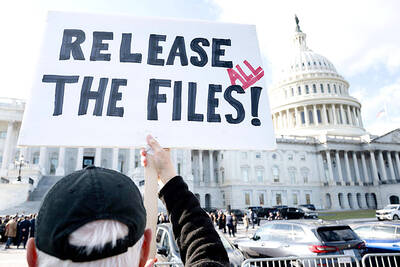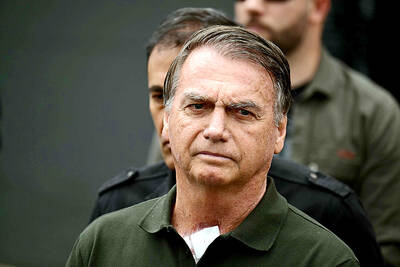US President Barack Obama plans to remove all US combat troops from Iraq by August of next year, administration officials said on Tuesday, ending the war that helped define his upstart presidential campaign — although a little more slowly than he promised.
The withdrawal plan — an announcement could come as early as this week — could help Obama turn his attention to another campaign pledge: Deploying more troops to Afghanistan, a region he calls the central front in the war on terrorism.
The timetable is a compromise. Removing so many people and tonnes of equipment presents logistical difficulties. Some commanders and advisers worry that security gains could backslide in Iraq if troops are brought out too soon, while others think the bulk of US combat work is long since done.
“We are now carefully reviewing our policies in both wars, and I will soon announce a way forward in Iraq that leaves Iraq to its people and responsibly ends this war,” Obama said in his address to Congress on Tuesday.
Obama built enormous grass-roots support for his White House bid by pledging to withdraw troops from Iraq 16 months after taking office. That schedule, based on removing roughly one brigade a month, was predicated on commanders determining that it would not endanger US troops left behind or Iraq’s fragile security.
Obama expects to leave a large contingent of troops in Iraq, between 30,000 and 50,000 troops, after August of next year to advise and train Iraqi security forces and to protect US interests, said two administration officials who spoke on condition of anonymity because the plan has not been made public. The contingent will include intelligence and surveillance specialists and their equipment, such as unmanned aircraft.
The withdrawal of US forces is set to be completed by December 2011, the period by which the US agreed with Iraq to remove all troops.
A senior White House official said on Tuesday that Obama was at least a day away from making a final decision. An announcement on Wednesday was unlikely, he said, but added that Obama could discuss Iraq during a trip to North Carolina on Friday.
About 142,000 US troops are in Iraq, roughly 14 brigades, about 11,000 more than the total in Iraq when former US president George W. Bush announced in January 2007 that he would “surge” the force to put down the insurgency. He sent an additional 21,000 combat troops to Baghdad and Anbar Province.
Although the number of combat brigades has dropped from 20 to 14, the US has increased the number of logistical and other support troops. A brigade is usually about 3,000 to 5,000 troops.
The White House considered at least two other options — one that followed Obama’s 16-month timeline and one that stretched withdrawal over 23 months, a report earlier this month said.
Some US commanders have spoken more optimistically in recent months about prospects for reducing the force.
Marine Major General John Kelly, who just left his job overseeing US operations in Anbar Province, said on Tuesday that he saw violence drop to an almost “meaningless” level over the past year.
Kelly told reporters on Tuesday that in the area that was the home ground of the Sunni insurgency, US combat forces don’t have enough to do and most could have pulled out months ago.
“There is still a security issue there, but in the province I just left the [Iraqi] army and the police are more than handling the remnants of what used to be al-Qaeda,” Kelly said. “There’s other parts of Iraq that aren’t going quite as well but all of Iraq is doing pretty well.”

The latest batch from convicted sex offender Jeffrey Epstein’s e-mails illustrates the extraordinary scope of his contacts with powerful people, ranging from a top Trump adviser to Britain’s ex-prince Andrew. The US House of Representatives is expected to vote this week on trying to force release of evidence gathered on Epstein by law enforcement over the years — including the identities of the men suspected of participating in his alleged sex trafficking ring. However, a slew of e-mails released this week have already opened new windows to the extent of Epstein’s network. These include multiple references to US President Donald

CHARGES: The former president, who maintains his innocence, was sentenced to 27 years and three months in prison for a failed coup bid, as well as an assassination plot Far-right former Brazilian president Jair Bolsonaro is running out of options to avoid prison, after judges on Friday rejected his appeal against a 27-year sentence for a botched coup bid. Bolsonaro lost the 2022 elections and was convicted in September for his efforts to prevent Brazlian President Luiz Inacio Lula da Silva from taking power after the polls. Prosecutors said the scheme — which included plans to assassinate Lula and a top Brazilian Supreme Court judge — failed only due to a lack of support from military top brass. A panel of Supreme Court judges weighing Bolsonaro’s appeal all voted to uphold

Chinese tech giant Alibaba yesterday denied it helps Beijing target the US, saying that a recent news report was “completely false.” The Financial Times yesterday reported that Alibaba “provides tech support for Chinese military ‘operations’ against [US] targets,” a White House memo provided to the newspaper showed. Alibaba hands customer data, including “IP addresses, WiFi information and payment records,” to Chinese authorities and the Chinese People’s Liberation Army, the report cited the memo as saying. The Financial Times said it could not independently verify the claims, adding that the White House believes the actions threaten US security. An Alibaba Group spokesperson said “the assertions

LEFT AND RIGHT: Battling anti-incumbent, anticommunist sentiment, Jeanette Jara had a precarious lead over far-right Jose Antonio Kast as they look to the Dec. 14 run Leftist candidate Jeannette Jara and far-right leader Jose Antonio Kast are to go head-to-head in Chile’s presidential runoff after topping Sunday’s first round of voting in an election dominated by fears of violent crime. With 99 percent of the results counted, Jara, a 51-year-old communist running on behalf of an eight-party coalition, won 26.85 percent, compared with 23.93 percent for Kast, the Servel electoral service said. The election was dominated by deep concern over a surge in murders, kidnappings and extortion widely blamed on foreign crime gangs. Kast, 59, has vowed to build walls, fences and trenches along Chile’s border with Bolivia to